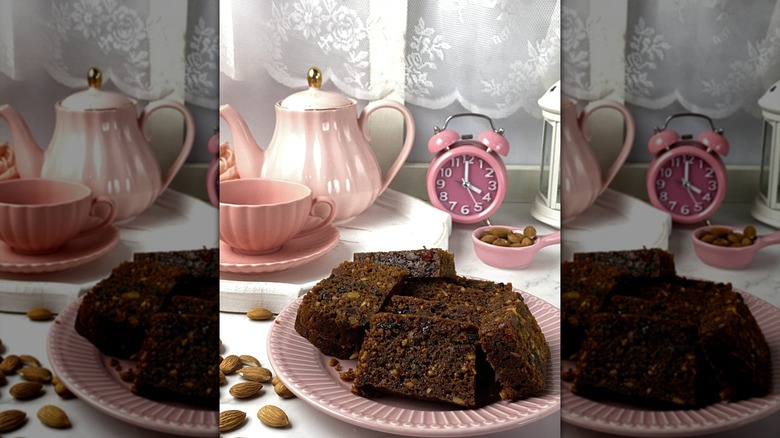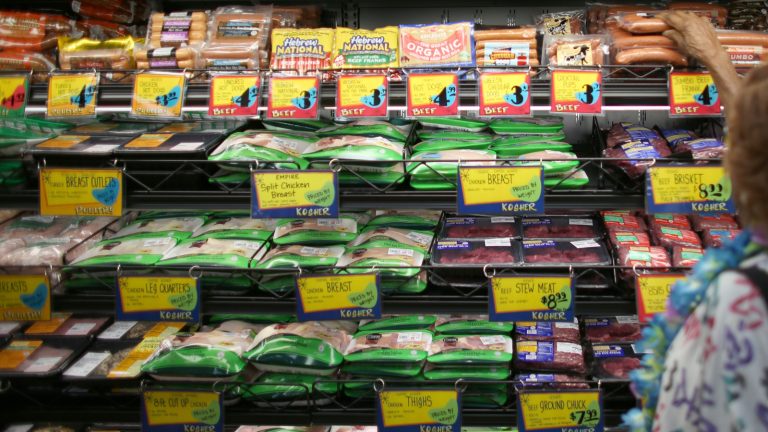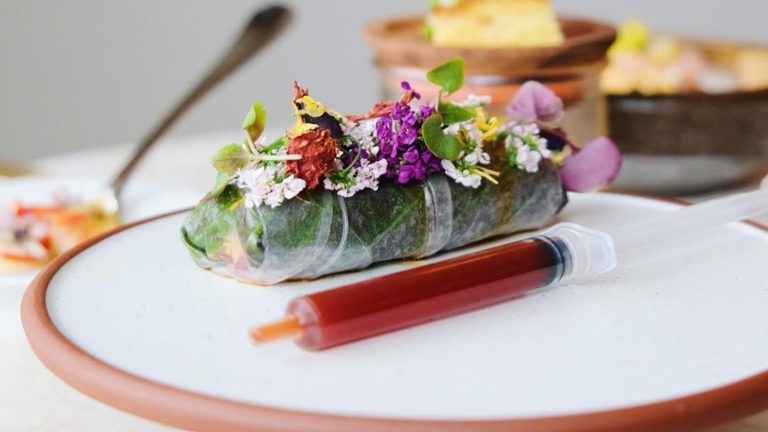Food and drink can often be a window into the past, from coffee’s prevalence in American culture being largely tied to a boycott of tea prior to and during the American Revolution, to the class differences highlighted by daily menus recovered from the final meal on the Titanic — and wartime food is no exception. The recipes that emerged during both World Wars reveal which ingredients were rationed, or became extremely expensive, and how regular people improvised during this time, combining cheap ingredients in new ways to feed their families. One of these such recipes? The eggless, butterless, milkless Ration Cake.
Nutty and surprisingly moist, there are several variations of the cake, but common swaps include baking soda and vinegar in place of eggs, water in place of milk, and margarine or lard, and sometimes even just leftover bacon grease, in place of butter. Honey, dried fruits, brown sugar, or molasses were sometimes used as sweeteners rather than the harder-to-come-by white cane sugar. These modifications lined up with traditionally rationed ingredients, harder to come by because of trade disruptions, diversion of resources to the war, and fewer farmers, since many of them became soldiers. Added oil helped the cake to stick together, and the baking soda vinegar combo’s famed chemical reaction helped add the springy, airy texture (thanks, carbon dioxide) that we usually rely on eggs to bring. Spices like cinnamon, nutmeg (check out our definitive guide on this spice), and cloves were added luxuries for a warm, gingersnap-esque flavor, especially prominent when paired with molasses.
Modified Ration Cakes throughout history
Although this cake is commonly associated with World War II, it’s also been more generally called a Wartime Cake, a Canadian Wartime Cake, and a Depression Cake, among other titles. Wartime rationing was one reason for this kind of ingredient modification, but economic hardships like the Great Depression of the 1930s were certainly another reason to cut out easily perishable and often expensive ingredients like butter and eggs. With references to the cake appearing as early as 1918 (at the end of World War I), some recipes are more than a hundred years old, and join an extensive list of creative recipes coined out of necessity. And with recipes for Canadian War Cake just as common in the 1940s, the scrupulous baking ideas even crossed international bounds.
Times might not be quite as dire today, but whether you’re similarly struggling with rising grocery prices — and the purchasing limit on eggs at Trader Joe’s — or just looking for some dairy-free desserts, maybe it’s time for you to try your hand at making Ration Cake. Whether baked in the 20th century or the 21st, there’s something about sharing a sweet treat with friends or family (and especially an affordable one) that helps you find joy in the skill of resourcefulness, and makes the dark days feel a little brighter.






